Charlottetown landmarks in photos, then and now
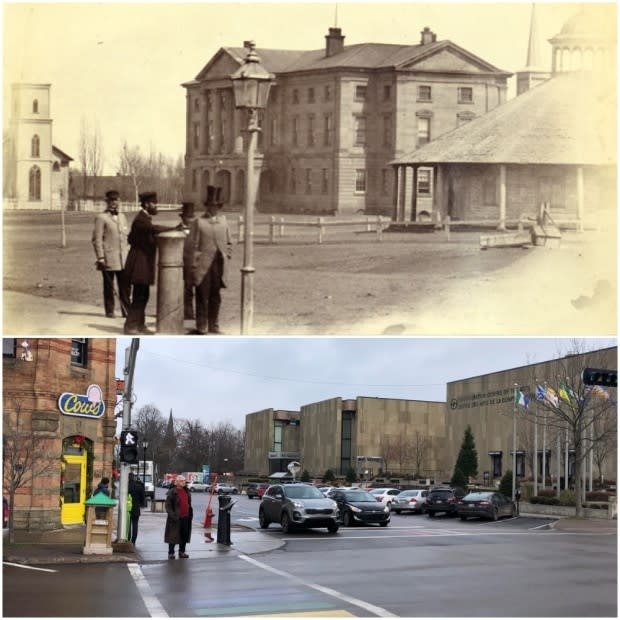
Happy birthday, Charlottetown! P.E.I.'s capital city turned 165 this past week.
We decided to take a look back at some of the city's beloved and enduring features and landmarks, and compare them to how they look today.
Thanks to P.E.I.'s Public Archives and Records Office, City of Charlottetown heritage researcher and collection officer Natalie Munn and historian and blogger Harry Holman for help with this article.
City Hall
The stately Charlottetown City Hall at the corner of Queen and Kent streets was built in 1888 on the site of Love's Tannery. It was built from P.E.I. sandstone and contained the police station, fire station, civic offices and jail cells. In 1931, a fire hall was added on Queen Street, using 1916 plans.
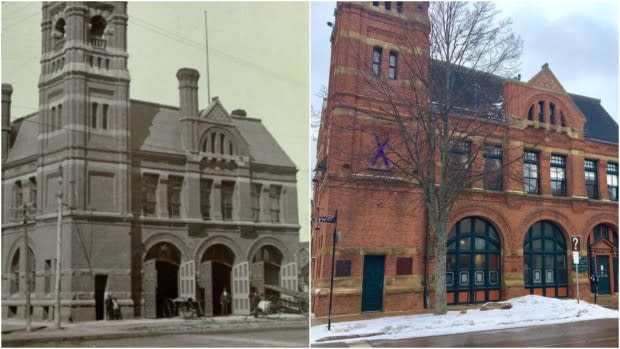
Back then, the fire wagons were pulled by horses, of course, and the stables were on the ground floor where people now go to pay parking tickets!
City hall was designated a national historic site in 1984. It has undergone several interior renovations over the years, most recently to the front doors. Last fall, students from Holland College's heritage retrofit carpentry program took apart and refurbished parts of the wood that needed to be replaced.
Province House
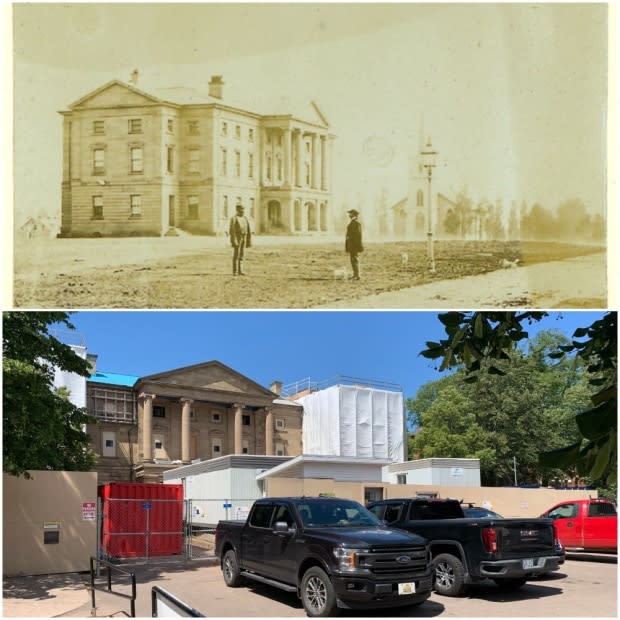
Prince Edward Island's Colonial Building was built in 1847 as the seat of the Island's legislature. Did you know the land was where the very first farmers market was held in Charlottetown?
Now called Province House, it is a designated national historic site and is perhaps most famous for being the site where the Fathers of Confederation met in 1864 and agreed to further talks to unite Canada, which began happening in 1867.
It has been closed since 2015 to undergo major conservation work by Parks Canada worth $91.8 million to date. Until it's done — 2022 was the most recent completion date given by Parks Canada — legislators are working out of the George Coles Building next door.
Richmond Street
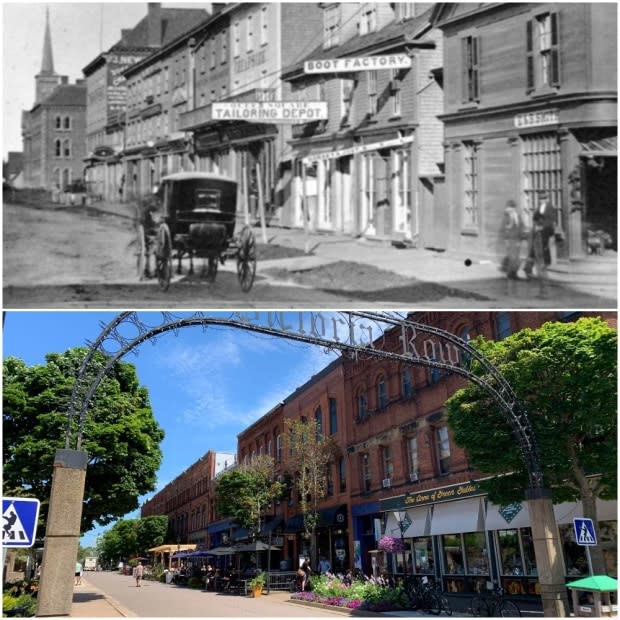
The most famous block of Richmond Street in downtown Charlottetown is the one facing the Confederation Centre called Victoria Row, where on a sunny day tourists and locals enjoy art and craft shopping, listening to live music and dining al fresco at several restaurants.
A fire in 1884 destroyed the wooden streetscape of Victoria Row. It was caused by a local confectioner named Kennedy, who knocked over a lantern while putting rat poison in his closet, said Munn.
After the fire, renowned architects William Critchlow Harris and C.B. Chappell were hired to design a new streetscape in '"fireproof stone and brick and we still have those lovely buildings," Munn said.
Changes to this historic area — like a pergola outside a restaurant — can invite controversy, as residents saw in 2019.
Victoria Park
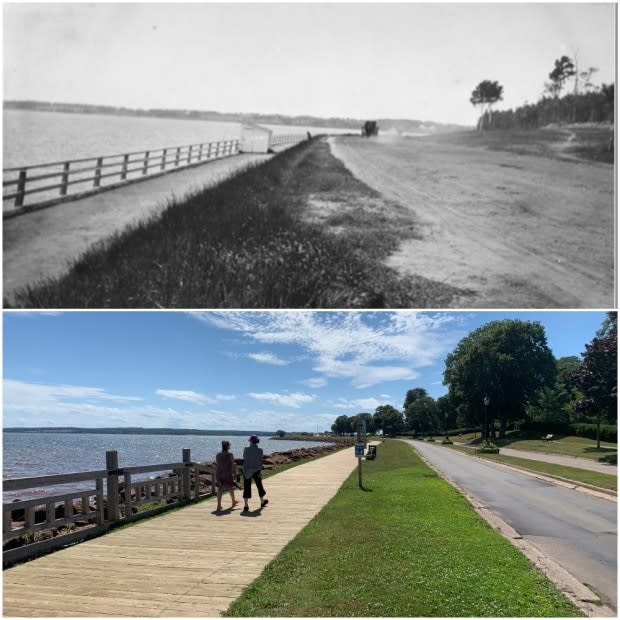
Victoria Park, named for Queen Victoria, was established in 1873, and is referred to by many as the jewel in Charlottetown's crown.
It was part of a 40-hectare (100-acre) parcel of land set aside in 1789 by then-Lt.-Gov. Edmund Fanning as the site for his future home and agricultural land — thus, the estate is called Fanningbank. In 1834 Government House was built, and in 1873, 16 hectares of the Government House farm were given to the city to use as a park, followed by six more hectares in 1905 including the battery of cannons overlooking the harbour.
Throughout the years, the park has housed a bandstand, a toboggan slide, playgrounds, tennis courts and a dairy bar. Public meetings on what should and shouldn't be allowed at the park, like concerts or floating docks, are always well-attended.
Something you might not know about the park is it contains an arboretum, a botanical garden of native trees and shrubs, some of which are quite rare. The arboretum is a popular area of the park for picnics and quiet activities, located in a clearing at the edge of the park trails, with Dead Man's Pond at its centre. An arboretum map is available online and paper copies of the map will be available at the ball field clubhouse veranda this summer, so you can give yourself a tour.
Confederation Centre of the Arts

The Confederation Centre of the Arts was built from 1963-64 in the modern "brutalist" style on an entire block bordered by Grafton, Queen and Richmond streets, on what had been the Charlottetown Farmer's Market for the previous 150 years.
It was built to celebrate 100 years since the Charlottetown Conference that led to Confederation, as a national institution dedicated to the performing arts — the original plan was that all provinces and territories would contribute to maintain it.
It was officially opened by Queen Elizabeth II in 1964. It was designated a national historic site in 2002, according to government website Canada's Historic Places.
The centre is home to an art gallery and public library and is probably best known for its long-running theatre festival, including Anne of Green Gables The Musical, which has taken the stage annually for the last 55 years — except for this year, when it was cancelled due to COVID-19.
Brighton
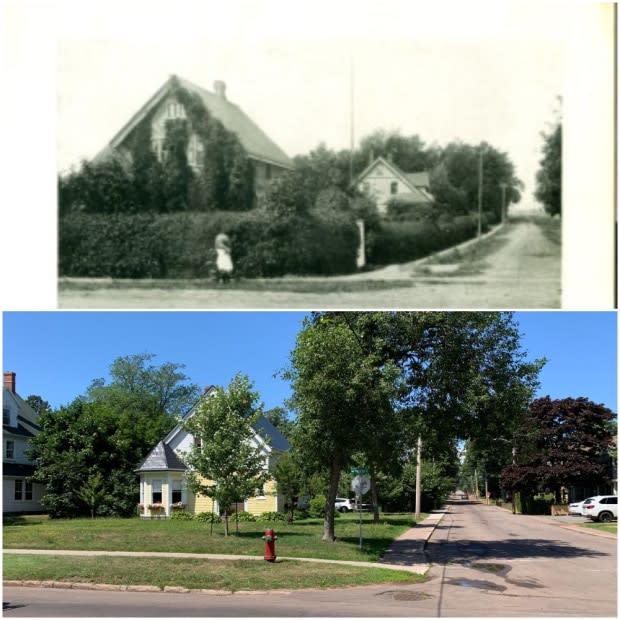
The area that is now Charlottetown's most coveted residential area, Brighton, used to be very rural and much of it was farmed, including livestock and fruit trees.
According to the City of Charlottetown's heritage website Charlottetown Stories, the home pictured above called Hawthorne Cottage was designed by William Critchlow Harris and built in 1891 for W.H. Stewart, a partner in The London House mercantile business. It then became the long-term home of James A. McMillan, the manager of the City's Water and Sewerage Commission. Appropriately, there was and still is a fire hydrant out front.
The train station

The last passenger train left P.E.I. in 1969, but for more than 100 years before that Islanders travelled by train.
The stately and solid Charlottetown train station on the corner of Weymouth and Water streets opened in 1907, built by Canadian National Railways. It was made of P.E.I. sandstone with Nova Scotia freestone trim, according to the federal-provincial website on Canada's historic places.
Did you know there was great controversy back then about where the station was to be built? According to the historic places site, city residents wanted it at the foot of Great George Street, but officials decided to build it near the original wooden station, which was then the edge of town, and a bog. There were allegations of political corruption and poor workmanship, and the project ended up costing $13,000 (about $300,000 in 2020 dollars).
After the trains stopped running, CN left the building in 1983. It had a variety of uses including being used as a farmers market, then it sat empty for several years.
In 1996, P.E.I.'s Workers Compensation Board bought it and refurbished it beautifully, and now uses it for its offices.
There are two other remaining reminders of P.E.I.'s railway left on Charlottetown's waterfront: the Brass House, built in 1876, was where brass fittings on the trains were polished — it's now a coffee shop. And the car shop built in 1908 by E.A. Wallberg, the same company that built the train station, was where railway cars were repaired — it is now Founders' Food Hall and Market.
The waterfront/wharfs
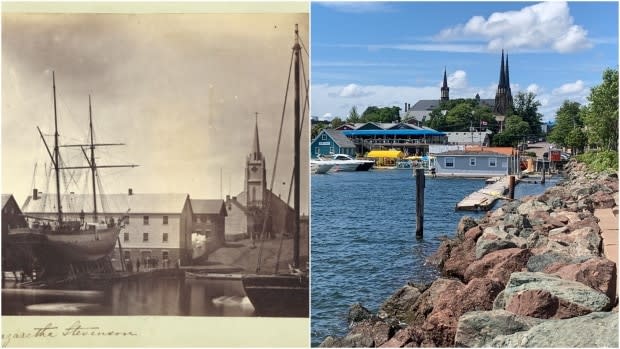
Along Charlottetown's waterfront there were historically a series of wharfs with a variety of uses, as there are today.
The waterfront was the centre of town, says archivist and historian Harry Holman, author of the blog Sailstrait, which tells the history of the port of Charlottetown.
By 1900, a dozen wharfs had been built at the end of almost every street and on private waterfront lots. Thus there was the Queen's Wharf at the foot of Queen Street, and Pownal Wharf at the foot of Pownal Street. They were used for everything from shipbuilding and ferries to warehouses for importing and exporting goods — and of course, for recreational sailing and rowing, activities which still exist today.
For more than 100 years, steamers also left Charlottetown Harbour daily for places like Mount Stewart, China Point, Victoria and Pinette as well as being the Island's connection with the mainland and to the "Boston States."
Today, there are fewer small wharfs and just a few large ones. The Port of Charlottetown welcomes commercial vessels unloading aggregate, fertilizer and the like and also hosts Charlottetown's cruise ship terminal. Charlottetown marina in front of Founders' Hall has removable floating docks that seasonally shelter recreational boaters, as does Peakes Wharf marina and the Charlottetown Yacht Club marina.
New landmarks

There is a new landmark emerging on Charlottetown's waterfront — a three-storey Urban Indigenous Centre. It will house the Mi'kmaq Confederacy of P.E.I., the Mi'kmaq rights-based organization L'nuey, as well as space on the ground floor for front-line services, artisans and possibly more.
The Mi'kmaq are Indigenous to P.E.I. as well as some parts of Nova Scotia and New Brunswick, and are believed to have lived on the land for at least 10,000 years.
Colonial developments over the last 400 years sidelined and decimated the Indigenous population, and the Mi'kmaq are now rebuilding and rediscovering their heritage, language and culture. As governments work with the Mi'kmaq toward reconciliation, expect more new landmarks to bear witness to and reclaim the important place of the Mi'kmaq people in P.E.I.'s past and present.
More from CBC P.E.I.


